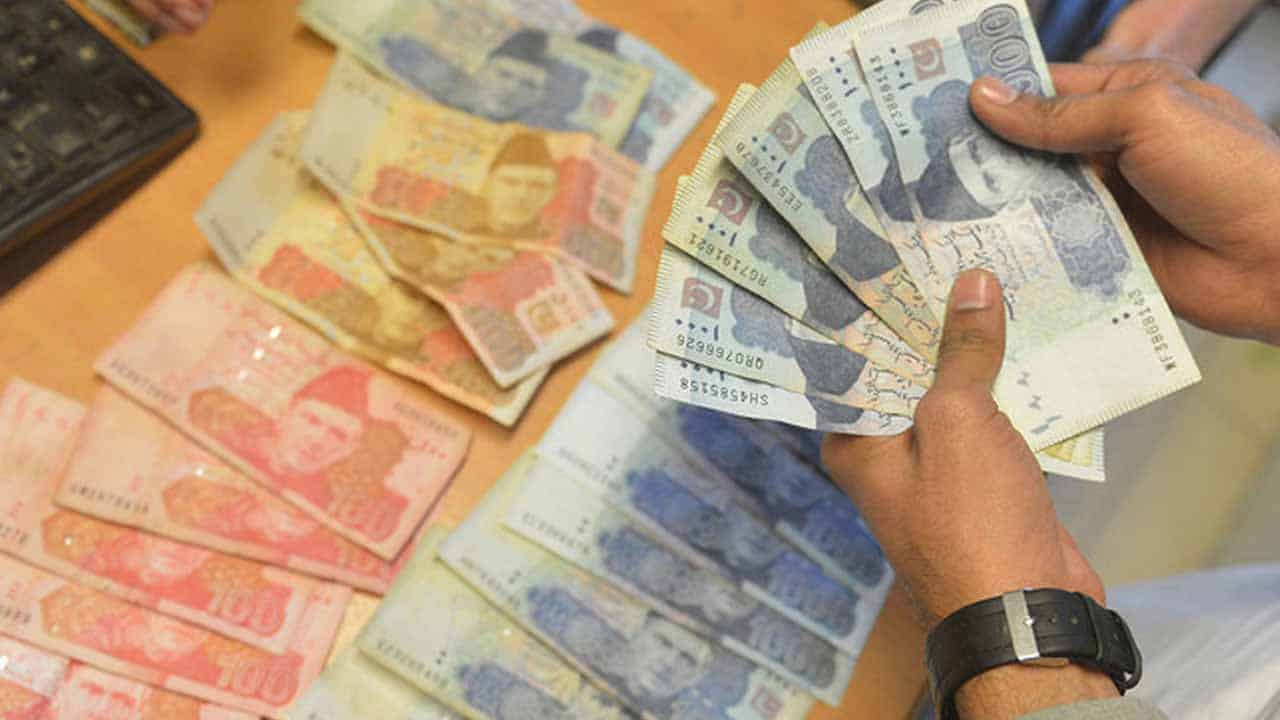Rupee expected to remain stable after falling to record low
The rupee’s steep devaluation continues to slow after reaching record lows last week, and the Pakistani currency is projected to move in a tight range against the dollar this week. The rupee closed at 305.47 per dollar on Friday, down 1.15% in the previous five sessions, while the local currency’s interbank market closing price on Monday […] The post Rupee expected to remain stable after falling to record low appeared first on Economy.pk.

The rupee’s steep devaluation continues to slow after reaching record lows last week, and the Pakistani currency is projected to move in a tight range against the dollar this week.
The rupee closed at 305.47 per dollar on Friday, down 1.15% in the previous five sessions, while the local currency’s interbank market closing price on Monday was 302 per dollar, falling further on Thursday to 305.54.
After eight consecutive sessions of record lows, it managed to hold steady on Friday.
During the week, the currency declined by 4.2% in the kerb market, where it is freely traded. According to the Exchange Companies Association of Pakistan, it fell from 315 per dollar on Monday to 328 on Friday.
Although the rupee is projected to suffer in the coming week, the currency’s decline appears to have slowed.
The rupee will be under pressure, but any weakness will be gradual, in my opinion. “I don’t expect an aggressive slide like the eight to ten sessions ago,” said a large bank’s foreign currency dealer.
According to the dealer, demand for dollars is high due to capital outflows, political turmoil, and economic uncertainty.
Another dealer claimed that the rupee’s fall was also caused by remittances being diverted to hawala, an informal money transfer channel, which stimulates demand for dollars among smugglers and informal/under-invoiced traders.
“The sudden drop in the value of the rupee is attributed to a combination of relaxation of import restrictions, weakening exports, and diversion of remittances to hawala,” he explained.
Import limits were eased in order to meet the criteria of a $3 billion bailout package from the International Monetary Fund, putting pressure on the rupee. Furthermore, political upheaval and economic uncertainty are putting pressure on the currency.
“Heads of financial institutions have been called, while traders on Friday were dissuaded from trading the dollar at or above the 306 level, and we will soon see forex companies being called by SBP,” Tresmark, a treasury market platform, wrote in a client note on Saturday.
“As a result of this, we expect the rupee to remain range-bound in the coming week, with some minor consolidation possible… but with the financial market in such disarray, people are wondering if it even matters now,” it added.
If nothing is done in the coming days, financial markets will continue to crash. “The cost of inaction is significant,” it stated.
According to the State Bank of Pakistan, the Monetary Policy Committee will convene on September 14 to deliberate on the policy rate, despite reports that it may undertake an off-cycle review.
Analysts believe that interest rates will rise by at least 100 basis points if inflation remains higher than expected. Because of the declining rupee and rising energy prices, the consumer price index will remain high in the immediate future.
“Despite the SBP’s clarification, analysts believe a radical shift in monetary policy is on the way.” It would assist persuade FX, commodity, and other asset hoarders to unwind, providing some respite to spiralling prices,” Tresmark added.
The post Rupee expected to remain stable after falling to record low appeared first on Economy.pk.








